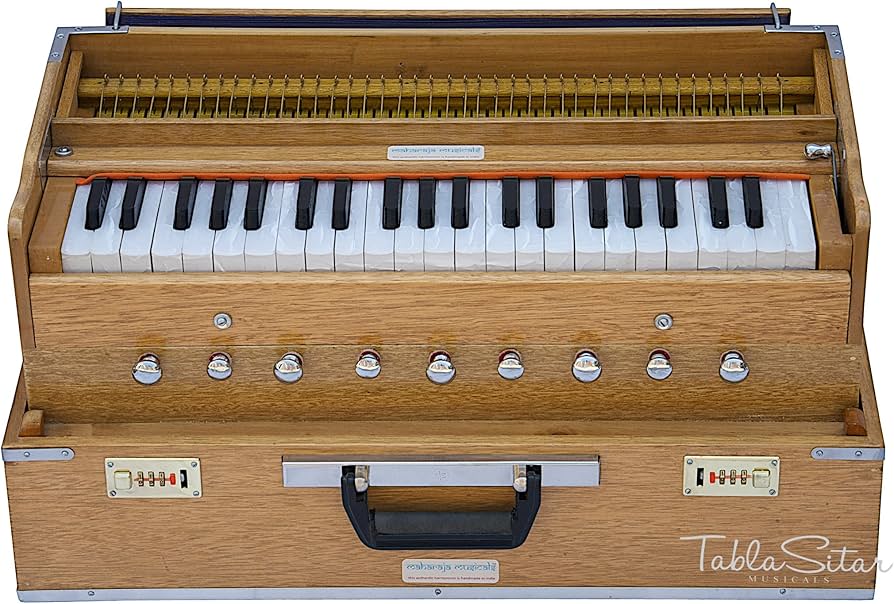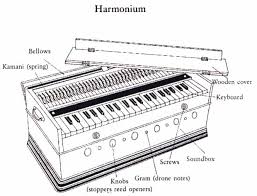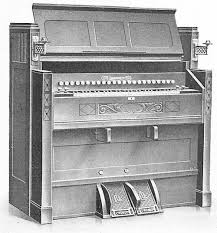
Title: The Harmonium: A Soulful Blend of Tradition and Melody
Introduction
The harmonium is more than just a musical instrument; it’s a bridge between East and West, past and present. Whether accompanying classical ragas, devotional bhajans, or folk songs, the holds a special place in the musical traditions of South Asia. Its rich, reedy tone and portability have made it a favorite among vocalists and composers alike.
A Brief History
The harmonium originated in Europe in the early 19th century as a free-reed organ. French inventor Alexandre Debain is often credited with creating the version that closely resembles what we use today. When it arrived in India via colonial trade routes, Indian musicians quickly adapted it to local needs, modifying it into a portable, hand-pumped version more suited to traditional Indian music. Over time, it became an essential instrument in Indian classical and devotional genres.
Anatomy of the Harmonium
A typically consists of:
-
- Bellows: Hand-pumped air supply that activates the reeds.
-
-
- Reeds: Thin metal strips that vibrate to create sound.
-
- Keys:Like a small keyboard, these control pitch.
-
- Stops/Couplers.Levers that control airflow and alter tone or resonance.
Some models also include scale changers and drones to accommodate different playing styles.
- Stops/Couplers.Levers that control airflow and alter tone or resonance.
Cultural Significance
In India, the harmonium is most commonly seen in:
- Classical music: Providing accompaniment for vocalists.
- Bhajans and kirtans: Spiritual and devotional singing.
- Ghazals and qawwalis: Urdu poetry sung with intense emotion.
- Folk music: Especially in regions like Punjab and Bengal.
Despite some purists criticizing it for not being able to produce meend (sliding notes), its versatility and expressiveness have ensured its popularity.
Tips for Beginners
- Start simple: Begin with basic scales and popular bhajans or folk tunes.
- Practice breath control: Smooth bellows technique is key for a consistent sound.
- Learn fingering techniques: Efficient finger placement helps with speed and clarity.
- Play along with vocals: Harmonium is best learned as an accompaniment instrument.
Conclusion


A Brief History of the Harmonium
The harmonium’s roots trace back to Europe in the 19th century, where it was originally a foot-pumped organ. French missionaries introduced it to India, where it underwent a major transformation—shifting to a hand-pumped version more suited to Indian music’s requirements and seated performances. Over time, it found a permanent home in the subcontinent, becoming an integral part of vocal accompaniment.
Anatomy of a Harmonium
At first glance, the harmonium looks like a cross between a keyboard and an accordion. But its mechanics are wonderfully unique:
-
Bellows at the back (or sometimes underneath) are hand-pumped to push air through the reeds.
-
Keys are laid out like a piano, but the harmonium is usually played with one hand while the other operates the bellows.
-
Reeds vibrate to produce sound, and many harmoniums offer multiple reed banks to enrich the tone.
-
Stops and drones allow the player to modify airflow and create sustained background notes, adding texture.
Why the Harmonium Endures
What makes the harmonium so beloved, especially in South Asian musical traditions?
-
Portability: Unlike larger instruments like the tabla or tanpura, harmoniums are compact and foldable—easy to carry for travel and concerts.
-
Vocal Support: Its ability to sustain notes makes it an ideal accompaniment for vocalists, providing a consistent tonal base.
-
Ease of Learning: With a keyboard layout and relatively straightforward mechanics, it’s approachable for beginners.
-
Rich Emotional Range: Whether it’s a soulful bhajan, a raga performance, or a ghazal, the harmonium brings warmth and depth to any genre.
Styles and Variations
Different types of harmoniums cater to different needs:
-
Standard harmoniums for studio or home practice.
-
Scale-changing harmoniums, which allow you to transpose keys with a lever.
-
Coupler harmoniums, which activate two reeds with one key for a fuller sound.
Harmonium in Modern Times
Despite criticism from some traditionalists who argue it lacks microtonal nuance, the harmonium continues to thrive. Artists like Pandit Bhimsen Joshi, Abida Parveen, and Krishna Das have made it an icon of devotional and classical music.
In recent years, fusion artists and indie musicians have also embraced the harmonium, blending it with electronic music and western genres. Its organic sound adds a raw, emotional layer that no plugin can replicate.
Tips for New Players
-
Start slow: Master simple scales and ragas to get used to the bellows and finger positioning.
-
Listen and mimic: The best way to learn ornamentation (like meend and murki) is by listening to masters.
-
Practice with vocals: The harmonium truly shines as a vocal partner—singing while playing helps build musical sensitivity.
Conclusion: A Living Instrument of Devotion and Expression
The harmonium is more than just a box with keys—it’s a bridge between the spiritual and the musical, the ancient and the modern. Whether you’re a singer seeking support, a composer crafting melodies, or a listener seeking soul, the harmonium has something to offer.
So the next time you hear its distinct sound swelling in a temple, a concert hall, or a quiet room at home—close your eyes, and let it take you somewhere timeless.
Would you like this adapted for a devotional, classical, or fusion-focused audience? Or turned into a series of posts (e.g., “Learning Harmonium,” “Best Harmonium for Beginners,” etc.)?
You said:
ChatGPT said:
Great! If you’re asking for a blog comparing the different types of harmoniums, here’s a well-structured post for that purpose:
Title: Types of Harmoniums: Understanding the Differences Before You Buy
If you’re new to the world of harmoniums or looking to upgrade your instrument, you might be surprised to discover that not all harmoniums are the same. From scale-changing models to portable, collapsible versions, the harmonium comes in various styles—each with its own pros, cons, and ideal use cases.
In this blog, we’ll explore the different types of harmoniums, how they differ in structure and function, and which type might be best suited to your musical needs.
1. Standard Harmonium
Description:
A basic, non-scale-changing harmonium with 2–3 reed banks. These models are typically used for home practice or classroom instruction.
Key Features:
-
No scale changer
-
Usually 2 or 3 sets of reeds (bass, male, female)
-
Solid build, consistent sound
Best For:
Beginners, music students, and casual players.
2. Scale-Changer Harmonium
Description:
This harmonium allows you to shift the entire keyboard to change keys without altering finger positions—ideal for accompanying singers who sing in different pitches.
Key Features:
-
Movable keyboard shifts the scale (usually by up to 7 semitones)
-
3-reed system is common
-
Often includes couplers for fuller sound
Best For:
Professional performers, accompanists, vocalists.
Pros:
-
Very versatile for different keys
-
Great tonal richness with couplers
Cons:
-
Heavier and more expensive
-
More parts = more maintenance
3. Folding (Portable) Harmonium
Description:
These are designed for easy transport. The bellows and keyboard collapse into a compact box.
Key Features:
-
Compact and travel-friendly
-
Often lighter in weight
-
Available in both scale-changing and non-scale-changing forms
Best For:
Traveling musicians, spiritual singers, field performers
Pros:
-
Easy to carry
-
Great for gigs and satsangs
Cons:
-
Slightly less stable sound compared to fixed models
-
More delicate parts
4. Coupler Harmonium
Description:
Comes with a mechanism that links a second set of keys to the ones you’re pressing, effectively doubling the note and enriching the sound.
Key Features:
-
Fuller, louder sound
-
Often combined with scale-changer models
Best For:
Concert performers, bhajan/kirtan singers
Pros:
-
Deep, resonant tone
-
Excellent for large venues
Cons:
-
Can consume more air (needs better bellows control)
-
Heavier and more complex
5. Electric Harmonium / Digital Harmonium
Description:
These are rare but emerging instruments that use electronic airflow or even full digital sound emulation. Some mimic the harmonium digitally through MIDI controllers or keyboards.
Key Features:
-
No bellows; powered electronically
-
Some models offer MIDI integration
Best For:
Music producers, modern fusion artists
Pros:
-
Can be played without fatigue
-
Easier to integrate into modern setups
Cons:
-
Lacks the traditional feel and soul
-
Less suitable for classical performance
Choosing the Right Harmonium
| Use Case | Best Harmonium Type |
|---|---|
| Beginner | Standard Harmonium |
| Vocal Practice | Scale-Changer |
| Travel / Satsang | Folding Harmonium |
| Stage Performance | Scale-Changer with Coupler |
| Studio / Fusion Music | Digital or MIDI Harmonium |
Conclusion: One Instrument, Many Personalities
The harmonium may seem simple, but its variations offer something for every kind of musician. Whether you’re a classical vocalist, a devotional singer, or an experimental artist, choosing the right type of harmonium is key to unlocking your full musical expression.
Before you buy, always test the sound, check the reed quality, and make sure the bellows work smoothly. Your harmonium should feel like an extension of your voice—and once it does, you’re ready to make music that truly breathes.
🎼"Harmonium Scales: A Beginner’s

3 Ways the Harmonium Helped Me Grow
1. Mindfulness and spiritual Practice
Because of its compact size and the ability to play on the floor in a seated position, playing the harmonium isn’t a far cry from sitting in a meditation posture and doing a seated practice. This has allowed me to connect playing and chanting with spiritual practice. Even more directly, playing the harmonium and chanting mantra supports other types of mindfulness based practices. When I teach meditation, people often say what is most challenging for them is the busyness of their minds. Chanting, especially with the soothing accompaniment of simple chords on the harmonium, can remedy a busy mind and clear the way for stillness, allowing me into deeper states of meditation and spiritual connection.
2. Performance Anxiety and Stress
I have had so much performance anxiety throughout my life, partially because I grew up playing music for others in competitions and critical and judgmental spaces. After burning out from making music in college, I found playing the harmonium and singing in the context of kirtan to be a relief and an entryway back into joyful music making. Playing simple chords, even just 2 simultaneous notes, to accompany my singing is often soothing and stress relieving. In part because the instrument is often played while seated on the floor, it can be grounding and again, its association with meditation practice gives me a different association with making music and singing as more of a holistic practice rather than a performance. Also, because of the nature of kirtan and devotional singing as a practice, I have been able to approach sharing music with others in a more meditative, less self-centered way. This has allowed me to develop a new groove in relationship to “performance” as I turn my attention both more inward past the critical, thinking mind, and simultaneously more outward to more of a universal experience and connection with others.
